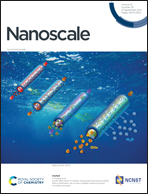Iron sulphide rice grain nanostructures as potential electrocatalysts for an improved oxygen evolution reaction†
Abstract
Iron based chalcogenides are considered a promising group of electro-active materials for various electrochemical technologies. Herein we demonstrate a facile fabrication of various iron sulphide (FeS) nanostructures, including rice grains (RGS)-, nanoflowers (NFS)- and nanoparticles (NPS)-like surface morphologies via electrochemical, solvothermal and chemical strategies, respectively. The as-developed FeS nanostructures have been employed as electrocatalysts for the oxygen evolution reaction (OER) in an alkaline electrolyte. Among other FeS nanostructures, FeS rice grains (FeS-RGS) exhibited an outstanding OER activity with a low onset potential (∼1.37 V), low overpotential (∼0.20 V), small Tafel slope (∼54.2 mV dec−1), high mass activity (∼5.4 A g−1), and high durability, outperforming the commercial state-of-the-art RuO2 catalyst. The high-performance OER activity of the FeS-RGS is associated not only to the synergistic effect of Fe and S, but also to the direct growth (binder-free) and edges of rice grain structures, offering a large number of electrochemical active sites and ensuring fast-diffusion of OH− ions of the nanostructures. The present one-step, low-cost and highly scalable preparation of FeS-RGS nanostructures provides new possibilities of morphology and synthetic methodology dependence of OER electrocatalysts for effective hydrogen production.



 Please wait while we load your content...
Please wait while we load your content...